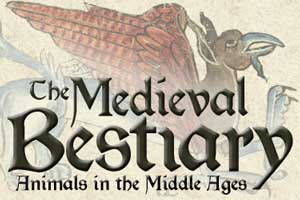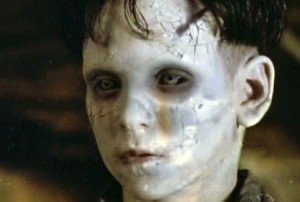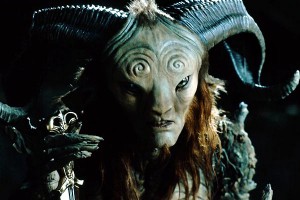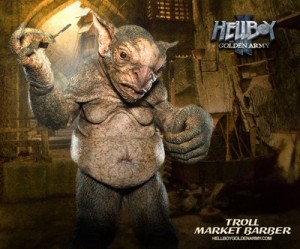 While checking the quotes and bibliographical sources in a recent book I was introduced to the work of Victoria Nelson. Nelson is an independent scholar and the author of The Secret Life of Puppets (Harvard University Press, 2002), as well as the forthcoming Gothicka (Harvard University Press, April 2012). In the midst of a very busy schedule she made some time to discuss her work in the Gothick in pop culture.
While checking the quotes and bibliographical sources in a recent book I was introduced to the work of Victoria Nelson. Nelson is an independent scholar and the author of The Secret Life of Puppets (Harvard University Press, 2002), as well as the forthcoming Gothicka (Harvard University Press, April 2012). In the midst of a very busy schedule she made some time to discuss her work in the Gothick in pop culture.
Victoria, thank you for this interview. My thanks goes to Jeff Kripal as well for helping to connect us. You’ve done some academic work and writing on alternative spiritualities, and what might be labeled esotericism in popular culture which is explored in part in your book The Secret Life of Puppets. You also have an interesting essay in THE BELIEVER titled “Cathedral Head: The Gothick Cosmos of Guillermo del Toro,” which will be expanded as a chapter in Gothicka. Del Toro is one of my favorite filmmakers today given his approach to horror and dark fantasy. How are you defining “Gothick” in del Toro’s work, and can you provide a few examples of how this surfaces in his horror and fantasy?
Victoria Nelson: Guillermo del Toro is a self-confessed (and very learned) devotee of the original “Gothick,” the scandalous 18th-century pop fiction genre founded by such writers as Horace Walpole, Ann Radcliffe, and Matthew Lewis. If you want a crash course in the Gothick, listen to his director’s commentary on the deluxe edition of The Devil’s Backbone and save yourself a year of graduate school! Those long-ago writers laid down a set of conventions that are still with us today: the young pure hero or heroine who journeys to an ancient castle, abbey, or mansion and must confront a mysterious evil there: think Jane Eyre and Dracula in the 19th century, Interview with a Vampire in the 20th century — I’m thinking of Louis’s plantation, which burns down like all charged Gothick spaces must–and del Toro in the 21st century. In The Devil’s Backbone, Carlos discovers the ghost of the murdered boy in the orphanage basement. In Pan’s Labyrinth, the young girl Ofelia finds an entrance to the Underworld in the labyrinth behind the mill. Both of them must face off against a murderous antagonist who is ultimately defeated and killed. Carlos escapes the haunted orphanage, but Ofelia is killed by her stepfather, only to reincarnate as the immortal princess Moanna. Her rebirth is the defining feature of much 21st century Gothick because it foregrounds existence beyond death.
TheoFantastique: One of the things that struck me in your essay was the mention of del Toro’s appreciation for the beauty of the monstrous. In my thinking this seems to be missing in much of the traditional religious expression in the West which has lost site of the synthesis of what might be called light and dark where the monstrous is repressed or explained away. Is del Toro recapturing an aspect of earlier forms of Western religious thought here?
 Victoria Nelson: Yes, he absolutely is. Del Toro is very eloquent on his love of the medieval grotesque–gargoyles on cathedrals and the fanciful creatures in medieval bestiaries–and he often expresses this love in religious terms. He said someplace that instead of Jesus, he accepted monsters into his heart. In the Catholic Middle Ages (the original Gothic that the first “Gothick” writers drew their inspiration from), monsters were also sacred creatures. Because they were something contrary to nature, the shock you felt looking at representations of them was supposed to jump you out of your rational mind into that other realm where the holy resides. There’s a whole bestiary of monsters in the market scene in Hellboy II, and his androgynous Death figure later in that movie has eyeballs embedded in its wings — that’s like medieval iconography on acid.
Victoria Nelson: Yes, he absolutely is. Del Toro is very eloquent on his love of the medieval grotesque–gargoyles on cathedrals and the fanciful creatures in medieval bestiaries–and he often expresses this love in religious terms. He said someplace that instead of Jesus, he accepted monsters into his heart. In the Catholic Middle Ages (the original Gothic that the first “Gothick” writers drew their inspiration from), monsters were also sacred creatures. Because they were something contrary to nature, the shock you felt looking at representations of them was supposed to jump you out of your rational mind into that other realm where the holy resides. There’s a whole bestiary of monsters in the market scene in Hellboy II, and his androgynous Death figure later in that movie has eyeballs embedded in its wings — that’s like medieval iconography on acid.
TheoFantastique: You describe Pan’s Labyrinth and The Devil’s Backbone as depicting a medieval metaphysic. How is this the case?
 Victoria Nelson: Both these movies use the old law of correspondences as part of their narrative engine. The sound bite for this is the old alchemical dictum, “As above, so below.” The invisible world and the material world are totally interconnected; what happens in one affects the other. It’s an idea that we’re all familiar with from Shakespeare, that when a person violates the moral order or the rule of heaven, the natural world reflects this upset in all kinds of ways: thunderstorms, earthquakes, etc. In The Devil’s Backbone, we feel that the bomb that accidentally drops into the orphanage courtyard simply got sucked down from the skies into the warp of evil already going on there: the murder of the boy. Pan’s Labyrinth is full of correspondences between the invisible world and the material world. One is the baby-shaped mandrake root that Ofelia puts under her mother’s bed to help her difficult pregnancy. As long as she keeps the root bathed in milk, the pregnancy goes well. As soon as the stepfather has the mandrake root destroyed, the mother miscarries and dies in childbirth.
Victoria Nelson: Both these movies use the old law of correspondences as part of their narrative engine. The sound bite for this is the old alchemical dictum, “As above, so below.” The invisible world and the material world are totally interconnected; what happens in one affects the other. It’s an idea that we’re all familiar with from Shakespeare, that when a person violates the moral order or the rule of heaven, the natural world reflects this upset in all kinds of ways: thunderstorms, earthquakes, etc. In The Devil’s Backbone, we feel that the bomb that accidentally drops into the orphanage courtyard simply got sucked down from the skies into the warp of evil already going on there: the murder of the boy. Pan’s Labyrinth is full of correspondences between the invisible world and the material world. One is the baby-shaped mandrake root that Ofelia puts under her mother’s bed to help her difficult pregnancy. As long as she keeps the root bathed in milk, the pregnancy goes well. As soon as the stepfather has the mandrake root destroyed, the mother miscarries and dies in childbirth.
TheoFantastique: On the one hand del Toro is critical of theistic forms of belief in God, but yet tells cinematic narratives about alternative magickal realities that might be interpreted as spiritual in nature. In his films, especially in Pan’s Labyrinth, he seems to leave open the interpretation that Ofelia is not having an escapist fantasy, but instead is taking part in another realm of reality that only certain people can see. Does it seem that there is some kind of tension in del Toro that may eschew Christianity and claim atheism yet still present a monstrous and Gothick fantasy that can be spiritual in nature?
 Victoria Nelson: In my opinion, he’s an atheist in name only. What he presents in Pan’s Labyrinth — the one film besides Cronos that’s his own original conception — is a kind of alternative Christianity spawned from Victorian fantasy. The Underworld palace where Ofelia/Moanna reigns is a faux Gothic cathedral with a Celtified rose window. He’s suggesting that our world is ruled from an alternative spiritual reality that’s mostly beneficent, even if it’s also populated by morally ambiguous creatures like the Faun and truly dreadful ones like the cannibal Pale Man.
Victoria Nelson: In my opinion, he’s an atheist in name only. What he presents in Pan’s Labyrinth — the one film besides Cronos that’s his own original conception — is a kind of alternative Christianity spawned from Victorian fantasy. The Underworld palace where Ofelia/Moanna reigns is a faux Gothic cathedral with a Celtified rose window. He’s suggesting that our world is ruled from an alternative spiritual reality that’s mostly beneficent, even if it’s also populated by morally ambiguous creatures like the Faun and truly dreadful ones like the cannibal Pale Man.
TheoFantastique: You have a forthcoming book titled Gothicka. Can you sketch a little about what this book will cover, and when can readers look forward to it coming out?
Victoria Nelson: The Secret Life of Puppets, my previous book about the grotesque supernatural, stopped on a dime in the year 1999. Gothicka (Harvard University Press, 2012) is about a range of 21st-century Gothick or Gothick-influenced genres (horror, romance, fantasy, sci-fi) considered in the light of both their 18th-century ancestors (many of which still make marvelous reading today) and the medieval Gothic that first inspired them. I talk about Dan Brown, Stephanie Meyers, graphic novelists like Neil Gaiman and Garth Ennis, the Christian writer William P. Young who wrote The Shack, and lots of others. Also oldies like Lovecraft, Rice, and King.
 There’s been a big, big shift in the Gothick figures of the vampire, the zombie, and other monsters in the last 20 years, towards spiritualizing them and making them the heroes instead of the villains. It’s beautifully summed up in the way vampires shifted categories from “undead” to “immortal.” Monsters have been humanized, humans are turning into gods — or Otherkin. Many of the Gothick fictions I talk about have been used as the scripture for new religious groups. It’s a fascinating pop culture trend toward a kind of subliminal Hindu-like pantheon of deities, along with a mainstreaming of the supernatural into the culture at large as never before.
There’s been a big, big shift in the Gothick figures of the vampire, the zombie, and other monsters in the last 20 years, towards spiritualizing them and making them the heroes instead of the villains. It’s beautifully summed up in the way vampires shifted categories from “undead” to “immortal.” Monsters have been humanized, humans are turning into gods — or Otherkin. Many of the Gothick fictions I talk about have been used as the scripture for new religious groups. It’s a fascinating pop culture trend toward a kind of subliminal Hindu-like pantheon of deities, along with a mainstreaming of the supernatural into the culture at large as never before.
TheoFantastique: One last question. Could you make a few comments about the issue of creativity, the unconscious, and the muse/daimon — the latter of which you all but mention in your On Writer’s Block?
Victoria Nelson: When I wrote that book, I was deeply into humanistic psychology and I viewed the world through a completely psychological lens. So I wasn’t really engaged with the idea of the muse or the daimon. I thought everything could be explained in terms of internal forces within a person, loosely labeled as the unconscious or the subconscious. So 20th century of me! It wasn’t until I wrote The Secret Life of Puppets that I found myself moving into different, old/new territory. Muses and daimons belong to the old, pre-Enlightenment worldview that externalizes all the forces we are brought up to think of as belonging to us as individuals. So, seen in that light, does our creative inspiration come from an unknown region or energetic force that resides inside us or outside us? From the unconscious or from the goddess? All I know for sure is the “unknown” part. That it certainly is!
TheoFantastique: Victoria, thank you again for discussing your work. I look forward to reflecting on it and having it inform my own understanding of the fantastic.
Related post:





Love it! Thanks to both of you for a valuable conversation. As you know, John, I’m very pleased that you managed to secure this interview.
And you even managed to hit upon one of my favorite topics. 😉